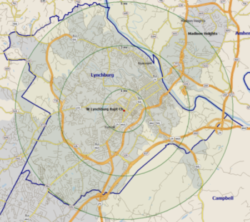
Where are We? Discovering our Community
Posted on Aug 2, 2021 in BLOG | Tags: Community, Revitalization

In the first blog post, we looked at the history of West Lynchburg. With decades of growth and stability, the church has made a significant impact in the community. Yet with the growth of the city and changing community surrounding the church property, the past few decades have seen a decline in average worship attendance and membership. What once was the growing west end of the city of Lynchburg is now an urban lower income setting. To reach the community, we must discovery who now lives in the area.
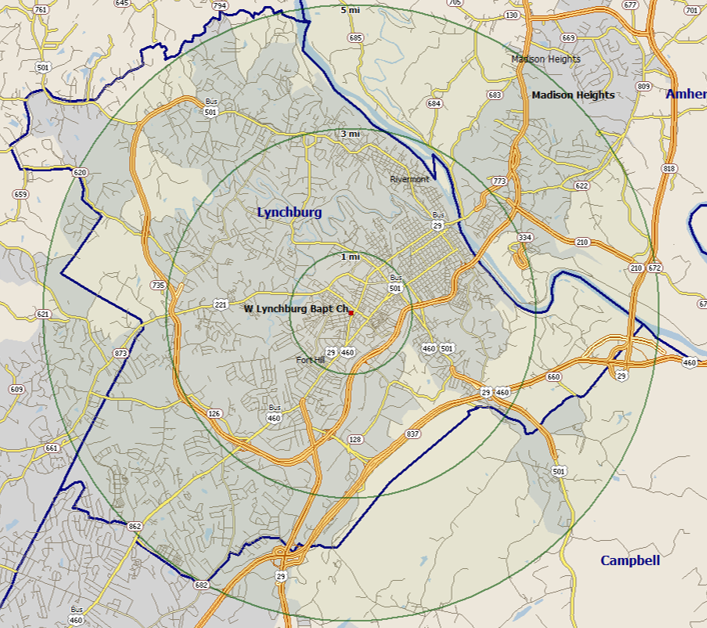
Figure 5: 5-mile Radius of WLBC provided by the Center for Ministry Research and Innovation – Baptist General Association of Virginia.
Beyond being a younger population surrounding the church, we will explore further their characteristics and interests. The MissionImpact Guide[4] delves deeper into the culture. It categorizes the population in various subgroups with the top four in this community called Colleges and Cafes, Urban Survivors, Hope for Tomorrow, and Digital Dependents. We will evaluate each one with the greatest community representation to the least represented.
The Colleges and Cafes group are young singles and recent college graduates living in a college community. Their religious perspective is “Looking for Heroes of Faith.” Their common spiritual issues are feelings of guilt, anxieties about abuse and shame. This group has a mixed reaction to the church. If leaning more liberal, they will gravitate to more mainline denominations. If leaning more conservative, they will gravitate to evangelical or independent churches. Many have given up on church altogether. They prefer mega-churches or micro-communities, but tend to avoid medium sized, traditional family churches of 100-300 people. Church Young Adult Ministries often struggle because they are too generic. When this group is committed to church life, it is usually a mission activity or public cause that motivates them. Worship preferences place a high emphasis on mission-connectional[5] and coaching[6] worship, and less on caregiving[7] and education[8] worship.
The next largest segment of the population is called Urban Survivors. This group is comprised of middle-age, older singles and single parents living in a modest urban setting. Their religious perspective is “Hoping prayer works.” The common spiritual issues are felling lonely and frustrated, with anxieties about guilt and death. Urban Survivors may be widowed or divorced, and some may have children living with them. Their striving to improve their life for themselves and their neighborhoods. Often, they have very materialistic aspirations. Alongside their faith in God’s purpose, they also believe that money is the key to a better life. They are willing to work boring jobs if it will help them make money. They would like for their children to have things they never had. When it comes to religion, faith is important but systematic theology is not. They often approach their faith more pragmatically than dogmatically. Faith is optimistic about this life believing God is active in their personal and community experience. Worship preferences for this group places a high emphasis on educational,[9] inspirational,[10] and mission-connectional[11] worship.
The third most common group is called Hope for Tomorrow. These are young, lower-income single parents in second-city apartments. Their religious perspective is “If you happen to meet God, tell Him I need a break!” Their common spiritual issues are feelings of anger and frustration, anxieties about fate and abandonment. This group is more likely to participate in a local church. Faith is important to this group and they enjoy volunteering. Worship preferences for the Hope for Tomorrow group is transformational[12] and coaching[13] worship.
The fourth most populous groups is called Digital Dependents. These are a mix of generation Y and X singles who live digital-driven, urban lives. Their religious perspective is “Looking for Heroes of the Faith.” Their common spiritual issues include feelings of guilt, anxieties about abuse and shame. Religious organizations have difficulty connecting with Digital Dependents due to their progressive attitudes and liberal values. Traditional evangelism methods, Sunday School, and worship have been ineffective in reaching this group. These creative multi-taskers spend more time in the virtual world than the real one, causing the human interactions at church to appear irrelevant. They are open to connect through sophisticated, interactive websites and internet cafes and chatrooms. Just like the College and Café group, this group’s worship preferences are mission-connectional[14] and coaching[15] worship.
[1] Scan/US 2020 Estimates. July 31, 2020.
[2] Executive Summary: Tracts Demographics Report City of Lynchburg, VA
[3] American Bible Society. The Most Bible Minded Cities in America. Last updated August 2015, accessed July 28, 2021, https://americanbible.org/features/americas-most-bible-minded-cities.
[4] Thomas Brand, Mission Impact Guide 3.0, MissionInsite, LLC. Last updated July 2020.
[5] Missional-connection worship is unity of action and reflection, all about outreach and volunteer empowerment.
[6] Coaching is informal, dialogical, topical, practical coaching on how to live better and more faithfully.
[7] Caregiving is slow, meditative, family-feel with pastoral prayer, children’s time, and senior celebrations.
[8] Educational is consistent liturgy, expository preaching, focus on doctrine, ethics, and history.
[9] See footnote 10.
[10] Inspirational is uplifting music, motivational speaking, focus on joy, optimism, and encouragement.
[11] See footnote 7.
[12] Transformational is spontaneous, expectant, personal transformation with High Power interventions.
[13] See footnote 8.
[14] See footnote 7.
[15] See footnote 8.
Read more…
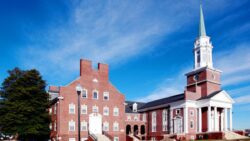
Who are we? West Lynchburg after 116 years
Posted on Jul 30, 2021 in BLOG | Tags: Attendance, History, Revitalization

In November of 1905, a group of Christ-followers stepped out in faith and started a new church. Uncertain of the future, they trusted the Lord to sustain them as a gospel influence in the west end of Lynchburg, VA.
The first building served the purposes for a few years but needed expansion by the sixth year due to the growth of the church. By the church’s 9th anniversary, land was purchased, and a new building erected a mile down the street that provided adequate space for future growth.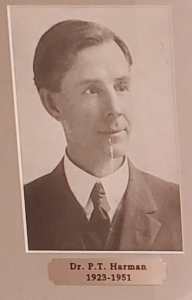
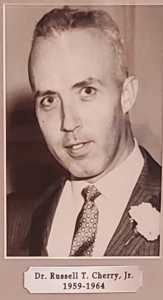 By 1963, the Pastor Dr. Russell Cherry led the church to add the educational wing offering a full and robust Sunday school program. Much of the growing Lynchburg community was aware of and has interacted with West Lynchburg Baptist Church. Records show that the 1960’s were the height of church involvement. There were many young families with children that filled the halls with life and vitality.
By 1963, the Pastor Dr. Russell Cherry led the church to add the educational wing offering a full and robust Sunday school program. Much of the growing Lynchburg community was aware of and has interacted with West Lynchburg Baptist Church. Records show that the 1960’s were the height of church involvement. There were many young families with children that filled the halls with life and vitality.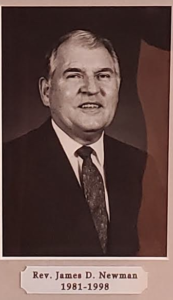
Throughout the 1980’s and 90’s, the church attendance was steady. Many of the members were beginning to move out of the local community as the city of Lynchburg expanded and new neighborhoods were developed. Rev. James Newman gave stable leadership and wonderful shepherding care during this time.
For 116 years, the church has been led by 14 faithful pastors who loved God, the church, and the community. As I begin my leadership as the 15th pastor, I stand on the shoulders of some great men who were like the men of Issachar “who had understanding of the times, to know what… to do.”
According to attendance trends provided by the Baptist General Association of Virginia[1], from the years 2000-2020, the average worship attendance dropped from just over 400 to under 200. As with most congregations, the pandemic of 2020 further decreased average weekly attendance.
As we look back and celebrate all that God has done in and through this church, we must also evaluate where we are now, understanding the times, and seek God to know what to do going forward.
In addition to experiencing a decline in attendance over the past 20 years, the Breeze Church Management Software[2] is utilized to understand the makeup of the current membership. It reveals the following age demographics:
- 70% = 46 years and older
- 20% = 19-45 years old
- 10% = 0-18 years old
The database clearly shows an aging congregation, where in former decades most of the congregation was younger.
A few reasons have been discovered for why this trend has take place:
- Longevity of membership. Many of the older members have been active in the church since they were young. They were saved, baptized, married, and raised their children at West Lynchburg.
- Children moved away as adults. Many of the children who grew up at the church did not remain as members, either moving away from the Lynchburg area, currently attend a different church, or no longer attend any church.
- Changing community. Many of the long-term members moved over 5 miles away from the church, though remained involved with the church. The new residents of the surrounding community either connected with a different church or did not affiliate with any church.
These are the current realities of West Lynchburg Baptist Church.
There is much to be thankful for in the 116 year history of West Lynchburg. God has used this church to be a lighthouse for the gospel in this community.
But what about the next 116 years?
What does the future hold? If the current downward trends continue, will there be another 116 years or even another 16 years?
To see a revitalization of West Lynchburg, we must…
- Acknowledge the reality of the state of West Lynchburg and have a heightened since of urgency regarding the decline.
- Pray and determine if we are committed to seeing West Lynchburg become effective in reaching new people and making disciples for God’s glory.
- Understand the surrounding community and the current culture in which we must engage.
- Search the Scriptures to discover what God’s mission and model is for His church.
- Determine the discipleship pathway to lead people into a dynamic, growing, and reproducing relationship with Jesus Christ.
- Establish a ministry to reach and disciple young families.
Pastor Chris Jordan
[1] https://www.bgav.org/blog/demographics-and-research-studies
[2] https://www.breezechms.com/
Read more…

Welcome to my new blog!
Posted on Jul 26, 2021 in BLOG | Tags: Revitalization

Read more…
